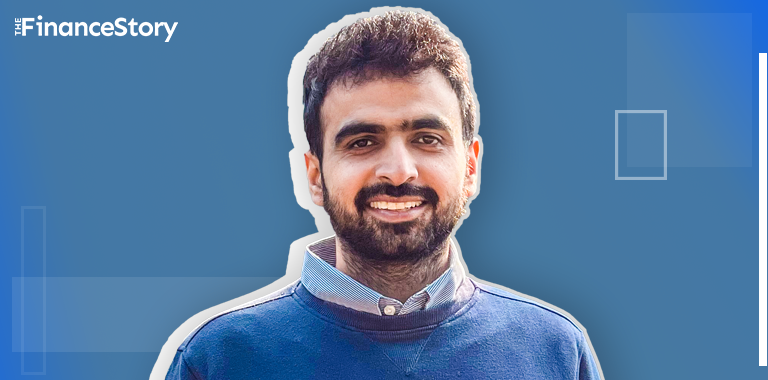- Hi, I am CA Pranav Modi, an FP&A professional who has been connecting the dots and looking after the financial health of various companies.
- In the last 12 years, I have worked with 6 companies; from Fortune 500 to Startups.
- Having a thirst for new challenges, I thought it would be better to explore different options, as long as I can.
- Have a look at my career trajectory.
I was not going to do audit or taxation, investment banking then?
Deciding what career path to pick was straightforward in my case.
Everyone from my father to my uncle and other cousins was Chartered Accountants (CA). That’s why like most Indian kids, I too followed the footsteps of my family members.
But, I was still unsure whether CA was the best option for me, hence I simultaneously started pursuing Company Secretary (CS). Just to have something as a backup.
After completing my 3 year CA articleship, I came to accept the fact that auditing and taxation, weren’t something I could picture myself doing in the long run. So what next for me?
Investment Banking seemed glamorous at that time, so I said, “Why not?”
I took quite a few additional courses and was fortunate to join Nomura as an Investment Banking Analyst. That’s how my journey began.
I worked on several mandates, pitch books, industry analysis, financial statement analysis, benchmarking of comparable companies, and valuation for sell-side and buy-side M&A.
No matter how glamorous IB looked from the outside, working 18 hours a day at a stretch for 2.5 years brought me down to earth.
Investment Banker wasn’t something that I aspired to be anymore… I was back to square one.
What now?
From Investment Banking to FP&A
Upon reflection, I realized, that helping an organization make business decisions would be an ideal role. The Financial Planning and Analysis (FP&A) role impressed me.
Thankfully I didn’t have to wait, as an FP&A opportunity at Reliance came up in 2013.
The transition into FP&A provided a paradigm shift. As an FP&A professional, you are the one who connects the dots and creates financial forecasts to ensure your company’s financial success. And to achieve that you need to think from the business’s point of view.
They counted on me for a lot of number crunching, and business insights on the basis of my analysis. Lots of crucial decision-making of the company depends on those numbers.
I was constantly in touch with either the sales or marketing head or the product manager to understand, what was going on. And if it took longer for them to complete tasks I would try to incorporate different processes into the system.
I used to go through a lot of equity research reports, industry reports, and balance sheets of the company to learn about the business.
From Fortune 500 companies to startups… Was it worth it?
Until 2017, I worked in large companies in the FP&A team and eventually made a bold move to Zeta, an early-stage startup founded by Bhavin Turakhia.
Just to draw a comparison, at Vodafone, we had a 100-150 people team, dedicated only to the finance function. So when you go from that to a team of 25 people, with no processes in place, it’s bound to become somewhat difficult for you.
At Zeta, I worked directly with the senior management, and M&A advisors, and provided support to CFO with all the relevant inputs for revenue and expense forecasting for business valuation.
Here I communicated with not only finance professionals but also non-finance guys. I had to explain to them why we needed to manage our company’s Profit and Loss (P&L) properly, what are the key metrics we were looking at, etc. Explaining to them what exactly we were trying to achieve with those budgets was also part of my responsibility.
It took me around, 4 to 5 months to adjust to the new work environment.
FP&A roles in startups
Needless to say, I was drawn to the startup environment.
After working with Zeta for 2.5 years, I moved on to CleverTap, the leading customer engagement and retention platform.
I had quite a good run at Clevertap. Here I provided the management with a monthly board meeting pack and MIS for investors with a detailed analysis of region-wise movement in ARR, cash flow, churn, SaaS metrics, and so on.
In May 2021, I arrived at my next destination, Hubilo – an event tech startup.
Since it’s a SaaS product I had to communicate with my sales and marketing team. I had to understand how they gave demos to the customers, and the features we have, and even discussed with the customer success team to understand how they are managing different events.
Right now we are implementing new business metrics in Tableau so that it’s easier for others to understand what the cash flow looks like, the revenue generated to date, etc.
Moving from one startup to another was a rollercoaster ride, as I had to constantly keep up with the changing work environment and mold my thought process accordingly.
As a non-tech person, it took me a generous amount of time to grasp the process.
But at the end of the day, I’m very happy to work with startups, because it gives me a 360-degree view of the business and more responsibility.
I probably wouldn’t have gained this much knowledge, had I continued working with large companies.
Thriving as an FP&A professional
FP&A has become an important function in big organizations and even at startups. The FP&A team is recognized for the value it brings to the senior management as well as to the investors.
It provides a clear lens to the management. It clearly reveals to the management, ‘these are the good or bad things happening in the company’ ‘this is how you need to make your financial and business decision’
A lot of CFOs now have an FP&A background.
If you are a finance professional or a student of finance, I suggest you take lots of financial modeling courses. It will not only help you understand how to make a financial model of a company but also teach you how to prepare a DCF model.
For instance, at Hubilo when we raised $125 million for series B, the FP&A team was heavily involved in making the financial projections and spearheading the due diligence process.
Hence learning this skill set would help you in your career, in some way or the other, and help you become a better FP&A professional.
Things to ask before joining a start-up?
Before joining the startups, the first thing I looked at was their senior management.
For instance with Zeta, its CEO was a serial entrepreneur with some successful exits in his previous organizations which essentially gave me a sense of promise. I knew in my guts that the startup was in good hands and would offer me good career advancement.
Another important thing I looked at was their business roadmap, and what was the ‘X factor that makes customers go for their company instead of a rival company.
The next thing I looked at is if VCs and private equity firms have invested money in these startups. That assured me that the startup is in it for the long run.
On the salary compensation front, some startups will try to offer you ESOPs or employee stock options to compensate you for a lower salary. Be deliberate about it as it could be risky.
Before taking that plunge, ask yourself, “What exactly am I trying to achieve from working with this startup?” And I am not just talking about money, but the experience and business insights you are going to get.
I know it might not be comfortable to ask the employer these questions, but it’s not just you committing to the company, the company is committing to you too.
In the end, if you think you want to grow, along with the startup, you can take the leap of faith.
According to Robert Half Financial, analyst jobs continue to be among the hottest positions now, with the midpoint financial analyst salaries at $69,250 for professionals with one to three years of experience. Just starting out? Read this.
Looking for a 1:1 call with a mentor to help you in your career? Fill in this form.














